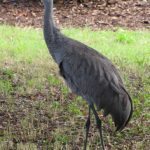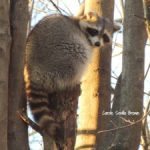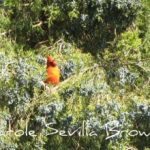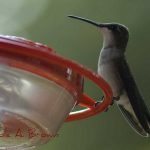This past weekend we ventured out in the 98 degree hot and humid Philadelphia weather to our local wildlife refuge, the John Heinz National Wildlife Refuge to do some birding.
The first thing I noticed was that all but one straggling Tree Swallow were already gone for the season. The Tree Swallows are the first migrants to arrive in the spring, staking out nest boxes in early March. And they are among the first migrants to head south to their wintering home in Mexico.
Now, there were hundreds of Barn Swallows swooping above the impoundment in search of insects.
But what fascinated me the most was one lone Monarch Butterfly nectaring at the thistle. I realized this was the first Monarch I had seen in Pennsylvania this season, and that is very late to be seeing my first Monarch.
There should have been hundreds of them at the refuge, and I should have seen many Monarch butterflies in my own wildlife garden much earlier this spring.
The monarch butterfly migration is a yearly event that sees millions of these butterflies fly from their summer habitats in Canada and the US to their winter homes in the high-altitude oyamel fir forests of central Mexico. The migration typically starts in late summer or early fall, and the butterflies fly as much as 2,500 miles over the course of several weeks, braving storms, winds, and other obstacles along the way.
One of the most fascinating things about the monarch migration is that it’s a multi-generational event. In other words, the butterflies that set off from North America in the fall aren’t the same butterflies that reach Mexico – instead, it’s the offspring of those butterflies that make the journey. This means that the butterflies that reach Mexico have never before seen their winter home, yet they’re able to find it anyway.
Another interesting aspect of the migration is how the monarch butterflies are able to fly such long distances in the first place. Scientists believe that the butterflies use a combination of environmental cues, such as the position of the sun, the earth’s magnetic field, and even scent, to navigate their way to Mexico.
More From Ecosystem Gardening:
Submit your review | |








